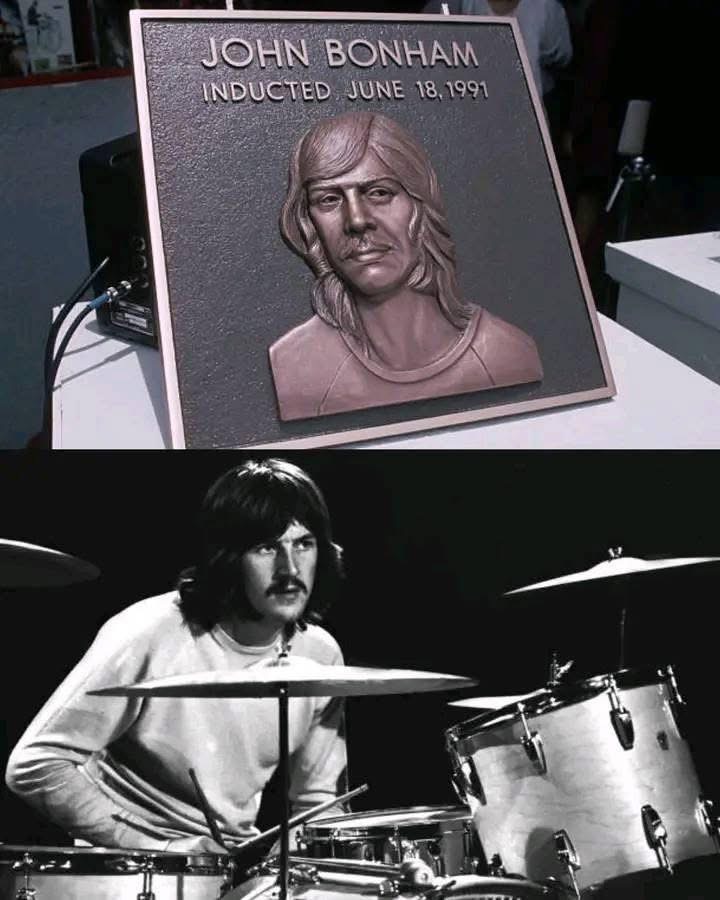John Bonham wasn’t just a drummer—he was an elemental force. Often described as “thunder in human form,” Bonham’s contribution to Led Zeppelin wasn’t limited to keeping time; he defined it, bent it, and unleashed it with such ferocity and finesse that he permanently reshaped the landscape of rock drumming. His legacy lives not only in the iconic Zeppelin catalog but also in the DNA of virtually every rock drummer who followed.
Bonham, affectionately known as “Bonzo,” joined Led Zeppelin in 1968, completing a lineup that would soon revolutionize music. While each member brought a distinct brilliance—Jimmy Page’s visionary guitar work, Robert Plant’s soaring vocals, and John Paul Jones’ compositional depth—it was Bonham’s drumming that anchored the band in power and propelled it into uncharted rhythmic territory. His playing was more than accompaniment; it was orchestral in scope, commanding attention with every kick, snare, and cymbal crash.
From the moment you hear the seismic intro to “Good Times Bad Times,” it’s clear Bonham was not content with the conventional. His use of rapid-fire bass drum triplets—achieved without a double pedal—was unheard of at the time. Songs like “When the Levee Breaks” showcased his ability to craft beats that felt monumental. Recorded with Bonham’s kit in a stairwell to capture natural reverb, the track remains one of the most sampled drum sounds in history, proof of its timeless weight and texture.
Precision was another hallmark of Bonham’s style. Despite the explosive nature of his playing, he maintained a metronomic accuracy that defied his raw power. Listen to “Kashmir” or “In My Time of Dying,” and you’ll hear drumming that’s at once primal and calculated. Bonham’s groove wasn’t mechanical—it was deeply human, full of subtle variations and instinctual shifts that made Zeppelin’s music feel alive. His sense of timing, pocket, and swing gave even the heaviest songs a natural flow that others struggled to replicate.
What set Bonham apart wasn’t just technique—it was feel. A jazz lover at heart, he infused Zeppelin’s blues-rock core with a sense of syncopation and dynamics rooted in his admiration for legends like Gene Krupa and Buddy Rich. This hybrid of styles—raw rock aggression tempered by jazz discipline—became Bonham’s signature. In tracks like “Fool in the Rain,” his use of the half-time shuffle groove exemplified his rhythmic versatility and his fearless willingness to explore new territory.
Perhaps no moment encapsulates Bonham’s mythos better than his extended solo “Moby Dick,” performed live with nothing but sticks, hands, and his sheer will. What could have been a showcase of indulgence instead became a ritual—audiences mesmerized by the physicality and innovation of a drummer completely immersed in his craft.
Tragically, Bonham’s life was cut short in 1980 at the age of 32. With his passing, Led Zeppelin disbanded—a silent but poignant acknowledgment that the band could not exist without him. In doing so, they affirmed what fans and critics already knew: Bonham was not just the drummer of Led Zeppelin; he was its heartbeat.
Today, his influence echoes through decades of music. From Dave Grohl to Chad Smith to countless garage-band hopefuls, drummers worldwide still study Bonham’s recordings like sacred texts. His grooves, fills, and sheer presence behind the kit remain a benchmark of excellence.
John Bonham didn’t just play drums—he *spoke* through them. And in doing so, he didn’t just change Led Zeppelin. He changed percussion history forever.
